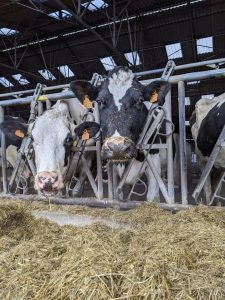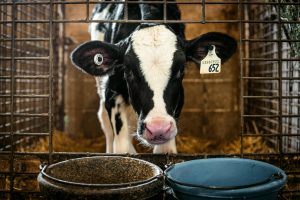Fernando Diaz
Calves born without any acquired immunity because immunoglobulins (Ig) cannot cross the structure of the placenta during pregnancy. As a result, calves depend on an adequate colostrum intake to acquire the necessary Ig and thus strengthen their immune system. Insufficient absorption of IgG in newborn calves can have negative consequences such as a decrease in the growth rate and future productive performance as well as an increase in the risk of contracting diseases and even death.
An indicator to assess whether colostrum management is adequate is the concentration of IgG in blood serum samples of calves between 2 and 7 days of life. When IgG values are less than 10 mg/mL, it is considered a failure in passive immunity transfer (FPT). Although colostrum feeding is the most important phase of a calf rearing program, several recently published works show high rates of FPT in commercial dairy farms.
Researchers from Prince Edward Island University, Canada, conducted an evaluation of the FPT in 207 Holstein calves and calves from 30 dairy farms located in Nova Scotia and Newfoundland. The authors (Elsohaby et al., 2019) found that approximately half of the animals (43.3%) showed IgG FPT. These results could be due to the low quality of colostrum fed on these farms, since half of the colostrum samples analyzed were of poor quality (IgG below 50 g/L). Another work carried out in Germany in which IgG concentrations were evaluated in 227 Holstein calves in four farms indicated that 30% of the animals showed FPT (Costa et al., 2019).
Similar results have been published in extensive production systems. A recent study (Abuelo et al., 2019) evaluated the concentrations of IgG in 253 calves of 23 Australian dairy farms and showed that the average prevalence of calves with FPT in the herds was 41.9%. Like the Canadian work discussed above, only 47.9% of colostrum samples showed adequate concentrations of IgG.
Although continuous monitoring of passive immunity transfer in newborn calves should be a routine practice on farms to evaluate colostrum management, only 6.2% of US dairy farms monitor FPT on a regular basis (NAHMS, 2014).
In addition to the quality and quantity of colostrum supplied, other factors related to the management of colostrum such as feeding time, method of administration (bottle, bucket or esophageal probe), storage (fresh, chilled or frozen) and colostrum pasteurization (intensity, duration) are associated with success in passive immunity transfer. To guarantee this transfer, it is necessary to provide at least 3 liters of quality colostrum during the first 2 hours after birth and at least another 2 liters within the next 4 hours.
About the author
Fernando Diaz is the Director of the Dairy Knowledge Center. He works as a Dairy Nutrition and Management Consultant at Rosecrans Dairy Consulting, providing consultation to dairies and feed companies, including nutrition and feeding management, forage and crop plans, ingredient procurement, and research and product development of new feedstuffs, additives, and technologies for dairy cows. Fernando lives in Brookings, South Dakota and can be reached at fernando@dairykc.com.
© 2020 Dairy Knowledge Center. All Rights Reserved.









